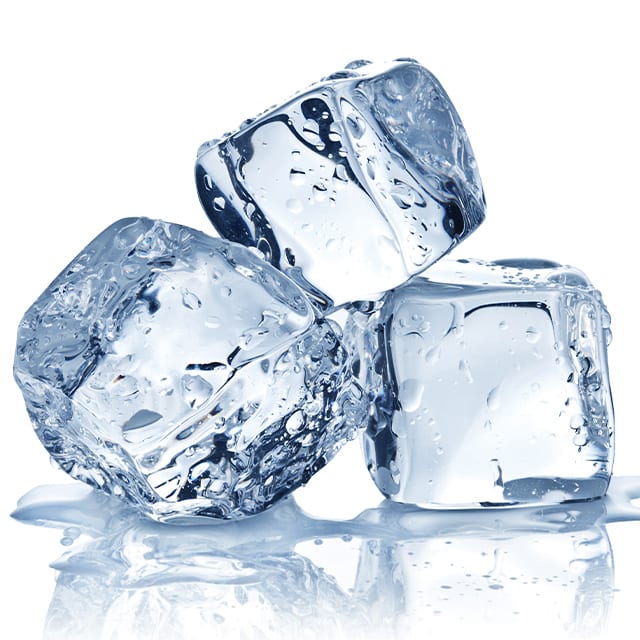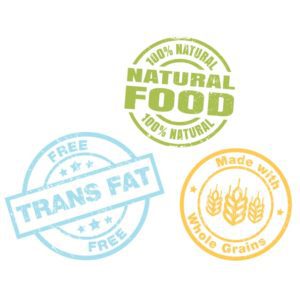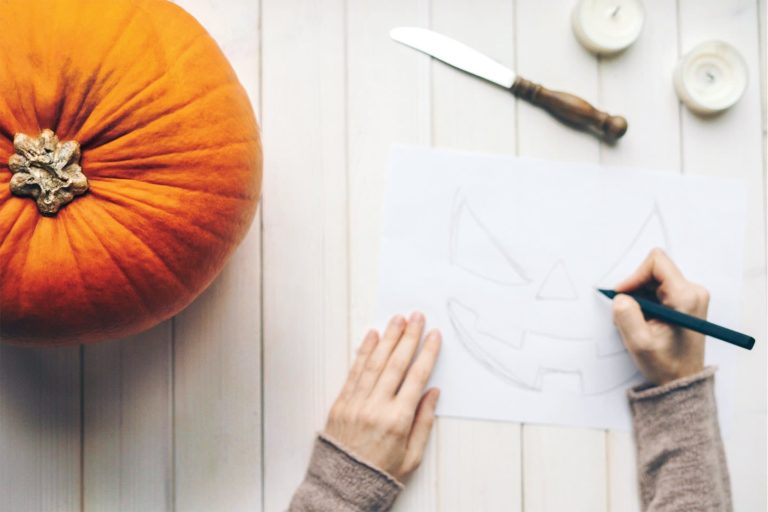Health in a Minute | For Him
The Smart Way to Feel More Full
Sometimes losing weight is more about mind over matter than how many hours you spend in the gym. Learn to beat your brain by trying just a few of these psychological tips and tricks for eating less and feeling full.
- Snack on foods that require more effort to eat such as shelled nuts, fruits with a peel, or edamame.
- Avoid cooking shows, and unfollow foodies on social media who might inspire you to chow down (even if you aren’t hungry).
- Make your kitchen and dining room a stress-free location.
- Count your bites to stay mindful of how much you’re consuming.
- Eat off of smaller plates or plates with a thicker border.
- Chew gum after you finish a meal to keep snack cravings at bay.
- Keep your candy or snack wrappers front and center instead of throwing them away immediately.

- Keep your candy or snack wrappers front and center instead of throwing them away immediately.
- Wear a belt or form-fitting clothes to the dinner table.
- Eat foods that are rich in water such as cucumbers, lettuce, and peppers.
- Hide less healthy snacks and foods out of sight, and put them on the top shelf where they are harder to reach.
- Leave food in the kitchen rather than bringing serving dishes to the table.
- Make your meals visually appealing.
It’s No Joke: Can Laughter Really Be Good for Your Health?
We’ve all heard the saying laughter is the best medicine, and while the research on the health benefits of laughter is still young, professionals agree that it certainly doesn’t hurt to laugh.
When someone laughs, their body goes through a physiological change. Muscles stretch, pulse and blood pressure go up, and breathing rate increases, which sends more oxygen to the body’s tissues.


While it’s not a substitution for a walk in the park, laughter does have a lot in common with exercise, and 10-15 minutes of laughing can burn about 50 calories.
Some researchers also believe that, due to its stress-relieving effects, laugher can boost our immune response and help us sleep better. Other studies have shown blood sugar levels and blood flow to respond favorably to laughter.
Even though there is plenty of room for the health benefits of laughter to stem from correlation and not necessarily causation, it is thought to improve one’s quality of life. So, what are you waiting for? Get to giggling!
Health in a Minute | For Her
Diet Don’ts for Migraine Sufferers
Do you ever find yourself hungry for headaches to be over? When it comes to the relationship between migraines and the food you consume, it can be difficult to discern what to eat and what to avoid. In general, the best foods for migraines coincide with the best foods for overall health, but still, no two people are exactly alike.
If you find yourself constantly combating headaches, try keeping a food journal to identify any possible triggers as it relates to diet. In the meantime, try to steer clear of these foods the next time you’re making a meal or searching for snacks.


- Sausage, bacon, and other processed meats that contain nitrites
- Large amounts of caffeine
- Red wine or aged cheeses, which contain tyramine
- Foods with monosodium glutamate, better known as MSG
- Artificial sweeteners with aspartame or sucralose
- Beta-phenylethylamine-loaded chocolate
- Bottled salad dressings and dips that contain preservatives
- Fruits such as bananas, oranges, grapefruits, and plums that cause a histamine release
Cryolipolysis 101


With innovation and technology leading the health and beauty industry, most of us have heard of CoolSculpting or some other fat-freezing procedure by now. But how much do you really know about the process?
The method of getting rid of fat by essentially inducing frostbite is called cryolipolysis and was approved by the Food and Drug Administration in 2010. Since fat freezes at a higher temperature than skin, scientists have discovered that it’s possible to destroy fat while leaving skin unharmed.
During a cryolipolysis procedure, your doctor will use paddles to cool your skin, and they generally stay in place anywhere from half an hour to roughly 75 minutes. During that time, around 25% of the area’s fat cells will be destroyed, and results can be seen within a few weeks up to a few months.
During the process, you may feel a pulling or tugging sensation along with intense cold. Afterward, some patients experience soreness and slight swelling, but there is virtually no recovery time.
With no cuts, medications, or anesthesia, cryolipolysis is a safer alternative to other more invasive fat-ridding procedures, but you should always consult a doctor before undergoing any cosmetic procedure.
Health in a Minute | For the Whole Family
The Importance of Family Traditions
Now more than ever, people are focusing on their families and looking for ways to stay connected. A great way to keep your family feeling the love is to maintain rituals and traditions.
Whether it’s an item passed down at weddings or a game played at a holiday gathering every year, these repeated behaviors are usually symbolic and meaningful. But that’s not all! They work wonders in making sure your family members have a sense of belonging and identity.
They can also give families something to look forward to, and since they typically span several generations, they can be a great way to pass down family culture, values, or history.


When creating new traditions to strengthen your family’s bond, consider a few things such as what certain events, activities, or items mean to you. Center traditions around activities that your family enjoys, and record traditions by taking pictures, keeping a journal, or compiling recordings.
And remember, it’s never too late to start making new memories!
Learn Your Labels
If you’ve ever spent time trying to decode the labels on your favorite items from the grocery store, you know just how confusing it can be. Well, we’re here to help. Read on for some common food label phrases and what they really mean.


Made with whole grains: Grains have three parts (bran, endosperm, and germ). When something is made with whole grains, the manufacturer keeps all parts intact. That’s not to say that there are only whole grains in the product, however.
All-natural: This designation is reserved for foods that don’t have any artificial ingredients. This doesn’t mean the food is healthy or organic.
Made with real fruit/fruit juice: Products with this label are only required to contain a small amount of actual fruit or fruit juice concentrate, and the actual fruit or fruit juice used isn’t necessarily the same as the marketed flavor.
No added sugar: These foods are devoid of any sugars or sweeteners such as corn syrup, honey, cane sugar, or glucose. They can, however, still include sugar alcohols such as sorbitol and xylitol.
Fat-free: This designation means the product has less than 0.5 grams of fat per serving.
Organic: Food labeled as organic is free of artificial preservatives, colors, and flavors, and its ingredients can’t have any artificial elements either.
Health in a Minute | For Moms
Pain Free Pumpkin Carving
With Halloween just around the corner, it’s no surprise that pumpkin carving is a top item on many people’s fall festivities to-do list. But when it comes to doing this activity with children, how do you make sure there are no mishaps that distract from the fun?
According to Consumer Reports, children under the age of 14 should not do any actual pumpkin carving. Instead, let them draw or paint their pumpkin or help clean out the seeds and pulp.
For those old enough to create a masterpiece, follow these tips and tricks.


- Work slowly and steadily, and never rush the project.
- Cut away from your body.
- Use small, controlled motions.
- Make sure your workspace is stable, dry, and well lit.
- Use specialty tools that get the job done without being too sharp.
- Keep the top on your pumpkin so you aren’t tempted to place your hand inside.
- Hold the stem to help stabilize your pumpkin.
- Keep your hands clean and dry to avoid slipping.
Tackling Teeth Brushing in Younger Kids
As an adult, it’s easy to know how to care for your teeth. Brushing twice daily and flossing regularly, along with scheduled checkups, are enough for most adults to keep a good bill of health when it comes to their dental hygiene. For kids, however, things can be a little less clear.
Even before your little one gets their first set of choppers, regularly run a clean, damp washcloth over your baby’s gums to clear the area of harmful bacteria. When teeth do finally emerge, brush them using an infant toothbrush and a tiny bit of fluoride – about the size of a grain of rice. As soon as your baby has two teeth that are touching, it’s fine to proceed with flossing.


Your child should first see a dentist around age 1, and by age 2, they should learn to spit while brushing their own teeth. Avoid giving them water to rinse with, as it can make swallowing toothpaste more likely. Continue to supervise teeth brushing until around age 8.

